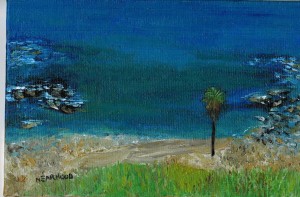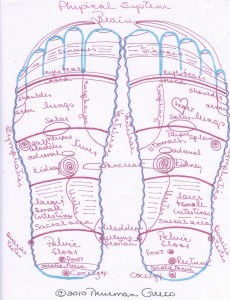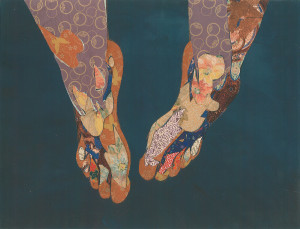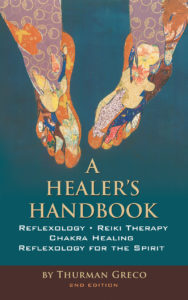Self-Care for You, Reflexologist
When you look at your calendar for the coming week…where are YOU on the schedule? If you are not on the schedule, you are not doing the basic self-care things things to protect your career. Self-care is the difference between a two-year career as a healer and a twenty-year career as a healer.
You are the healer. You join the professional organizations. You pay your taxes. You make sure your office is “just right”. You take continuing education classes. In short, you do the things necessary to protect your business.
But, what about you: your body, your spirit, your emotional strength, your thoughts? Where are they lined up here with the bills and the available appointments, and the marketing activities?
For many healers, body workers this is the most difficult thing to do on the entire list. As reflexologists, we’re accustomed to give, give, give. And, we enjoy giving. Obviously we enjoy giving or we would never have taken even the first class.
The bottom line here is that you commit to your own private, inner, personal wellness when you receive a weekly session. You also set an example for your client partners.
Things you can do!:
Begin by filling your spiritual tank. Schedule a session for yourself each week. Every week. Do something. Get a massage. Get a Reiki session. Schedule a session with a shamanic healer. Try out that new chiropractor who just moved into your neighborhood.
Do something! The important thing is to get on someone else’s table at least once a week.
Personally, I receive an hour-long Reiki therapy session every week…no matter what. I also receive a reflexology session every week. The work I do the rest of the week is much better for this hour which I invest in myself.
Thank you for reading this blog.
Please refer this article to your preferred social media network. Share this article with a fellow healer.
Thurman Greco
9 Things Reflexologists Don’t Do – and 5 Things we Do
Cure – Reflexologists do not cure. Instead, we promote healing, which can be a very
different thing, depending on the issue.
Patient – Reflexologists do not have patients. Physicians have patients. We have client partners. Some reflexologists have clients. But, whatever we have, we don’t have patients.
Recommend – We do not recommend. Instead, we work feet. We concentrate our energies on facilitating healing.
Advise – Reflexologists do not advise. We support our client partners in their healing path. Our work brings about homeostasis and synchronicity.
Examine – We do not examine. We read feet or hands or ears. .We notice where our findings are located. We work the feet, hands, ears, to bring about healing, homeostasis, and synchronicity.
Prescribe – We do not prescribe. That’s for physicians and other medical professionals. We rely on our hands and hearts to tell us what we find, to encourage healing, to facilitate homeostasis, to see synchronicity.
Dispense – We have nothing to dispense beyond the sessions we offer.
Diagnose – We do not diagnose. Physicians assist us in our healing efforts when they offer a diagnosis. This is important because it’s much easier to overcome a health issue if it has a name.
Administer – We do not administer anything. Instead, we read feet, offer sessions. Our noninvasive sessions have been offered to client partners for ages and ages.
Reflexology for the Spirit practitioners use our hands, brains, and hearts.
We do not need to over schedule our days to be successful. Twenty-five appointments a week is a full time practice for a Reflexology for the Spirit practitioner.
We are not wedded to advertising. Some of us don’t even have business cards. Referrals work well for us.
Because Reflexology for the Spirit works well with other modalities, many of us also practice yoga, massage, Reiki therapy, flower remedies. That means we are always growing, learning.
We honor our heritage. Reflexology for the Spirit practitioners take our traditions back many, many years:
Our history takes us far back in time with beginnings shrouded in mystery. What we do know is that early references to reflexology can be found in China, India, Japan, Egypt, Greece, North Africa, the Arabian Peninsula, the Mediterranean, South American and North America.
Historians tell us that Egyptians practiced both hand and food reflexology as early as 2500 BC. If you ever travel to Egypt, please visit the burial ground at Saqqara. The Physician’s Tomb there has a famous wall painting showing two people receiving reflexology.
If you ever find yourself in Japan, be sure to visit the Medicine Teacher Temple in Nara. There you’ll find a stone carving depicting the soles of Buddha’s feet in a carving dating to 790 AD.
In India, there are paintings of Vishnu, the Hindu god’s feet with symbols corresponding to several reflexology points.
Ayurveda is an ancient Indian form of medicine becoming popular in our country. Reflexology is incorporated in Ayurvedic medicine.
Reflexology has been recorded in ancient Chinese writings describing pressure being applied to fingers and thumbs.
From this glorious history and recent twentieth century trailblazers, we now have thousands of people practicing various kinds of reflexology throughout the world.
Reflexologists the world over work in tandem with physicians as our field moves toward integrative medicine in the twenty-first century. Integrative medicine works to heal the total person: the physical, mental, emotional, spiritual.
Reflexology has endured the test of time and is modern as tomorrow in the 21st !century.
Thank you for reading this blog. It has been a long time since I’ve posted an article. I have been working full time/overtime on the new book! It’s happening!
Thurman Greco
Woodstock, New York
Five Things You Need to Know About Being a Reflexology for the Spirit Practitioner
Five things you need to know about reflexology that make it a very inviting career:
First, Reflexology for the Spirit, by its very nature, is a low tech career field. Practitioners use their hands, brains, and hearts instead of machines.
Second, generally speaking, a Reflexology for the Spirit practitioner scheduling 25 sessions per week is a full time practitioner.
Third, it’s relatively easy to establish a practice without yellow page ads, billboards, etc. Some practitioners don’t even have business cards. Word of mouth is the best method here. If you like to write, you may offer a short newsletter periodically. But, more on marketing in future posts.
Fourth, Reflexology for the Spirit works well with many other modalities. A practice may be established which includes essential oils, flower remedies, yoga, massage, etc. I have several graduates who have added Reflexology for the Spirit to their yoga practices.
One modality which combines well with Reflexology for the Spirit is Reiki therapy. Reiki therapy is easy to learn, very easy to use with Reflexology for the Spirit, and the client partners love it. It’s a light touch offered to a clothed recipient. You can use Reiki therapy anytime you offer Reflexology for the Spirit.
There are no known contraindications or side effects with Reiki therapy so it can be used on virtually everyone. When combined with Reflexology for the Spirit, Reiki therapy offers a “boost” to the client’s self healing mechanism as the body moves toward homeostasis.
Fifth, If your client partners can be encouraged to eat healthfully and avoid chemicals and toxic elements – mercury, lead, hormones, or antibiotics often found in foods-reflexology sessions can be a lot more effective. If a food has a label you can’t read, pronounce, or understand, it’s not acceptable.
It’s easier for our bodies to get and stay healthy if the foods we eat are clean.
In the next posts, you’ll learn a bit about the glorious history of reflexology along with a description of the benefits, and contraindications.
Thank you for reading about Reflexology for the Spirit.
Please refer this article to your preferred social media network.
Please send a comment.
Don’t forget to join the email list.
Peace and food for all
Thurman Greco










